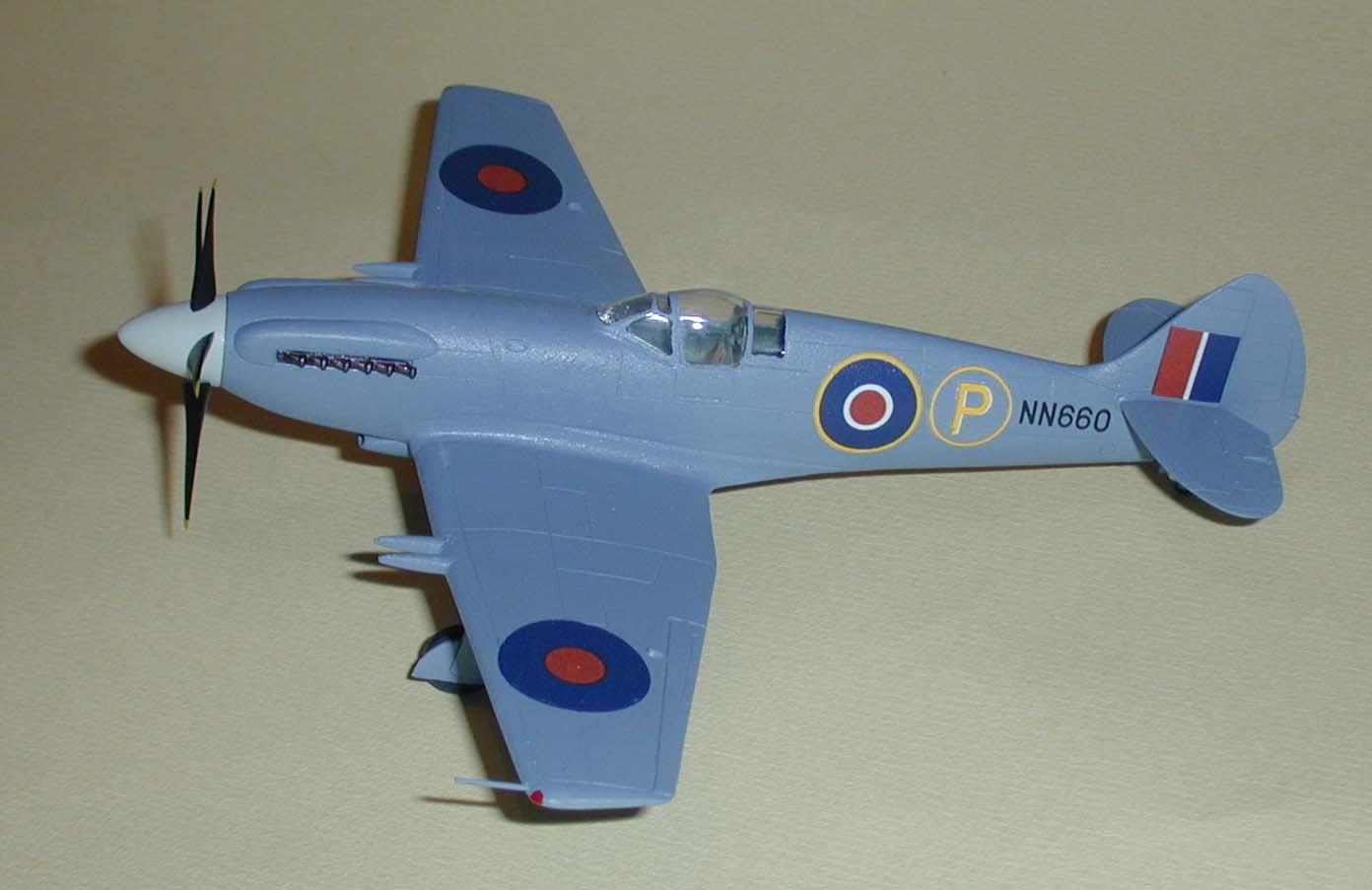

On 30th June 1944 Jeffery Quill made the first flight in a Spitfire XIV which had been modified to flight test the laminar flow wing designed for the Supermarine Spiteful. The aircraft had a short life, crashing on 13th September and, unfortunately, killing the pilot, Frank Furlong. The cause was diagnosed as the aileron control rods jamming against a wing rib under positive ‘g’.
This information, found in ‘Spitfire – The History’ by Morgan & Shacklady, together with a photograph of the aircraft, serial NN660, instantly gave me an idea for a relatively easy conversion project. I had a ‘spare’ Pegasus kit of the Spiteful, having ruined the canopy, and the Academy Spitfire XIV was cheap and easy to find. The only question was whether they would go together and there was only one way to find out – get cracking and try it!
The Academy fuselage was built ‘straight from the box’, including the cockpit interior, and put to one side. The Pegasus fuselage halves were then joined together and left to set for a few days before the centre section was removed by cutting around the wing root fairing, leaving a generous surplus to start with and then trimming down to the panel line once the bulk of the fuselage had been removed. Holding the remaining centre section up to the Academy fuselage showed that it was potentially a good fit for width so the work of trimming the fuselage started. Luckily I found a side view drawing in Jeffery Quill’s book ‘Spitfire – A test Pilot’s Story’ which resolved the question over whether Spitfire or Spiteful wing root fairings were used (Spiteful) and confirmed the impression from the photograph that the leading edge of the wing was further forward than on the standard Spitfire (somewhere under the rear exhaust stub).
Only a small amount of Milliput, smoothed with the usual wet finger or cotton bud, was needed to complete an almost perfect joint. The Pegasus wings were then cleaned up and attached with a plastic rod spar set into holes drilled into the roots before the model was finished with parts from the appropriate kit (Academy propeller, tailwheel and tailplanes, Pegasus radiators and main undercarriage) except for two small details. I chose to use Aeroclub white metal 4-spoke main wheels as they were better than the Pegasus kit ones (and the Academy ones looked a bit wide) but the big challenge was the windscreen. In the photograph it was obvious that the windscreen was the curved type only (as far as I know) used on the Seafire 47 and I didn’t have one, nor know a kit which could supply one. After appealing for help on the IPMS(UK) web pages I found out that the Falcon Clear-Vax set for the Spitfire contained one (and only one!) suitable canopy. Luckily, as a keen RAF WWII modeller, I could justify the purchase of the set (to myself, at least) and so the nerve-wracking task of cutting out and fitting the windscreen completed the assembly.
With one black-and-white photograph the colour scheme was guess-work. It looks as if a single colour was used overall, which was slightly darker than the spinner (assumed to be Sky) and the yellow outer ring to the roundel. After much thought I settled on a grey primer finish as most likely and decided to use Tamiya Light Grey (XF-66). Looking at the finished result this is too ‘blue’, but it seems about right for contrast. All decals came from Modeldecal sheets except for the prototype ‘P’ markings which came from the Joe’s Decals sheet and were a right pain, refusing to adhere and not responding to Microsol/set as well as being in too bright a yellow. Unfortunately there is no alternative way that I know of to create these markings.
Despite this last problem the finished model won the monthly competition at my local club (Plymouth Scale Model Association), a nice little boost for this ‘straight from the boxes’ conversion.